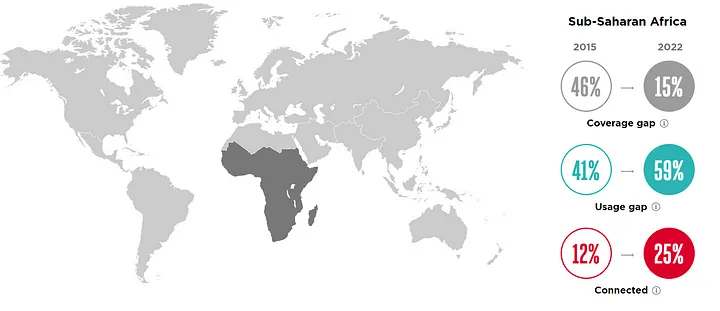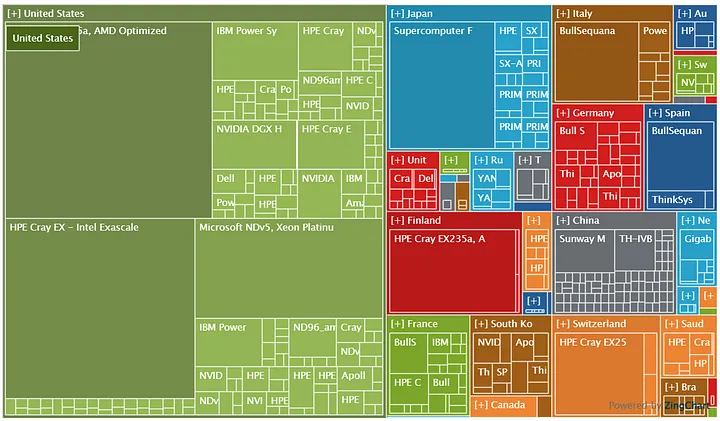At the dawn of telecom reform, as governments began to recognize the power of competition and private sector investment, they also realized that while overall investment in digital infrastructure would significantly increase in a competitive environment, this investment would likely be concentrated in densely populated urban areas.
In response, regulators like the FCC in the United States enforced rules to fund universal access, and governments worldwide awarded competitive licenses that required bidders to cover rural areas as part of their investment obligations. Many governments also set ambitious broadband goals regarding speed and penetration, supplemented by public funding initiatives.
As a result, countries like South Korea developed around 95% of their broadband infrastructure through private investment within a competitive environment, significantly boosting connectivity in rural areas and among disadvantaged groups through proactive policies.
A Closing Broadband Divide
However, today’s digital landscape has evolved beyond mere access to and use of broadband. While broadband remains a crucial metric, cloud computing and artificial intelligence (AI) have emerged as key drivers of modern competitiveness for cities, regions, and nations.
Simultaneously, new technologies, such as satellite broadband, have reduced costs and increased competitive options for rural connectivity. Thanks to innovations like Dense Wavelength Division Multiplexing (DWDM) and heightened competition, data transfer through submarine cables now costs a fraction of what it did a decade ago, too, making global Internet access more affordable. Over the last ten years, the cost of transatlantic bandwidth has plummeted from USD 20–30 per Mbps to less than USD 1 per Mbps today.
Similarly, access to smartphones in Africa has quadrupled, with around half of the continent’s population now having access to a smartphone — despite challenges like high import duties on IT equipment and excessive taxation. For a deeper exploration of these issues, see the book Broadband Strategies Handbook.

Cloud Infrastructure Divide
Yet, the digital divide becomes more pronounced when we factor in cloud computing.
In Africa, for example, about 40% of the continent’s cloud infrastructure — around 150 MW of installed capacity — is concentrated in South Africa.
By comparison, the southern European city of Milan alone has an installed capacity of 215 MW, with another 400 MW under construction. As it stands, Milan ranks as the sixth largest city in Europe in terms of cloud capacity, just outside the famous FLAPD (Frankfurt, London, Amsterdam, Paris, and Dublin) acronym. At its current capacity, this single European city has cloud infrastructure roughly equivalent to half the African continent.
Globally, more than 95% of cloud infrastructure investment is driven by the private sector, similar to historical broadband statistics. However, in the absence of mandates or public sector planning — which could prove counterproductive — these investments tend to be highly concentrated in specific regions and cities. This has led some public authorities to intervene by setting policies to manage growth, as seen in Ireland’s new data center construction restrictions.
Emerging markets are attracting significant private investment in cloud infrastructure, as evidenced by developments in South Africa, Brazil, and Malaysia, and high-profile investments like the Microsoft-G42 partnership in Kenya. However, when measured by access to cloud infrastructure, the digital divide becomes even more apparent, underscoring the need for more targeted, proactive policies to address these gaps.
HPC Divide
The divide widens further when considering artificial intelligence. Today, the primary global destination for graphics processing unit (GPU) shipments is high-performance computing (HPC). Approximately half of the Top 500 HPC systems are located in high-income countries.

Among emerging markets, China alone hosts about 200 of these — very few others possess HPC infrastructure. Over the next four years, data centers are expected to move from the fourth to the second-largest destination for GPUs. This suggests that countries with robust data infrastructure will attract future investments. Thus, today’s divide in cloud infrastructure will shape tomorrow’s divide in AI, compounding the disparities created by existing HPC infrastructure.
Emerging markets may have some advantages in terms of access to energy resources, which could help mitigate aspects of this emerging divide. For example, AWS’s agreement with Talen Energy to secure long-term access to nuclear energy for data centers is a significant industry development, which underscores the importance of access to cheap energy.
In the realm of AI, the divide should also be measured by access to large language models (LLMs), as the coexistence of proprietary and open-access models reflects a market structure similar to the proprietary vs. open-access software landscape of a few years ago.
In conclusion, the modern world requires a redefinition of the digital divide. It is no longer sufficient to consider broadband access alone; the dimensions of cloud infrastructure and artificial intelligence must also be factored in to understand the full scope of digital inequality.
Carlo Rossotto is a Principal Investment Officer at the International Finance Corporation.
The views expressed by the authors of this blog are their own and do not necessarily reflect the views of the Internet Society.
Adapted from the original post which first appeared on Medium.


